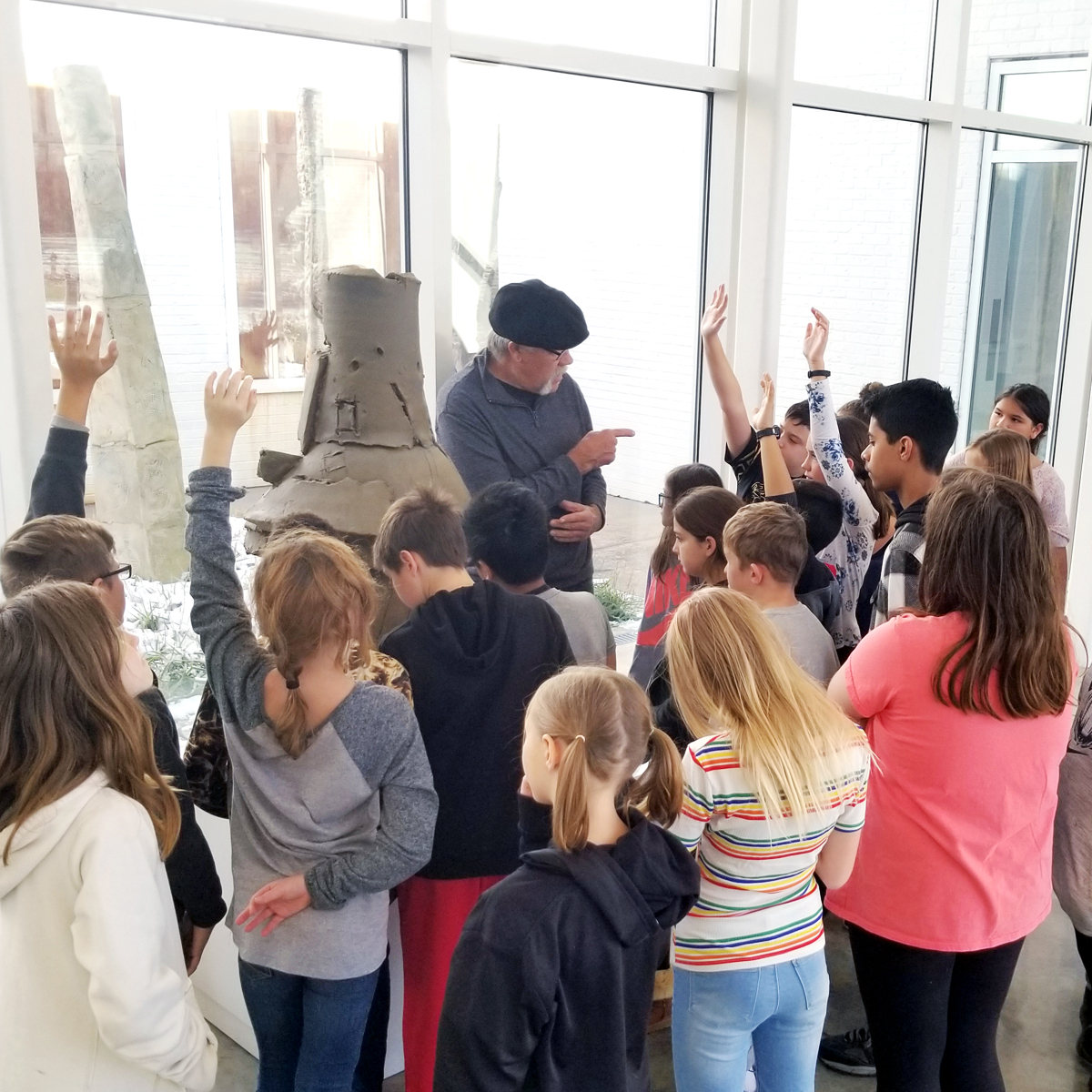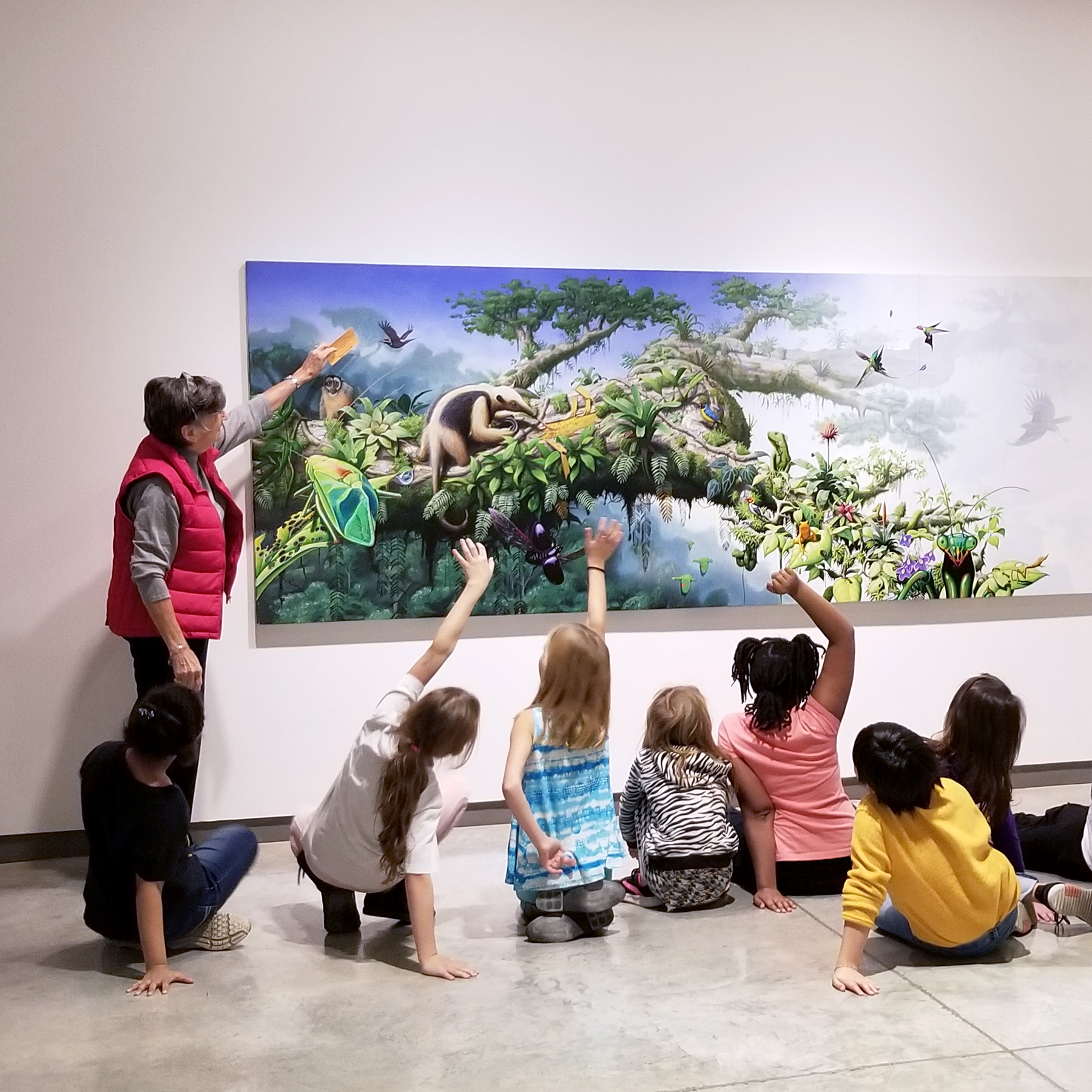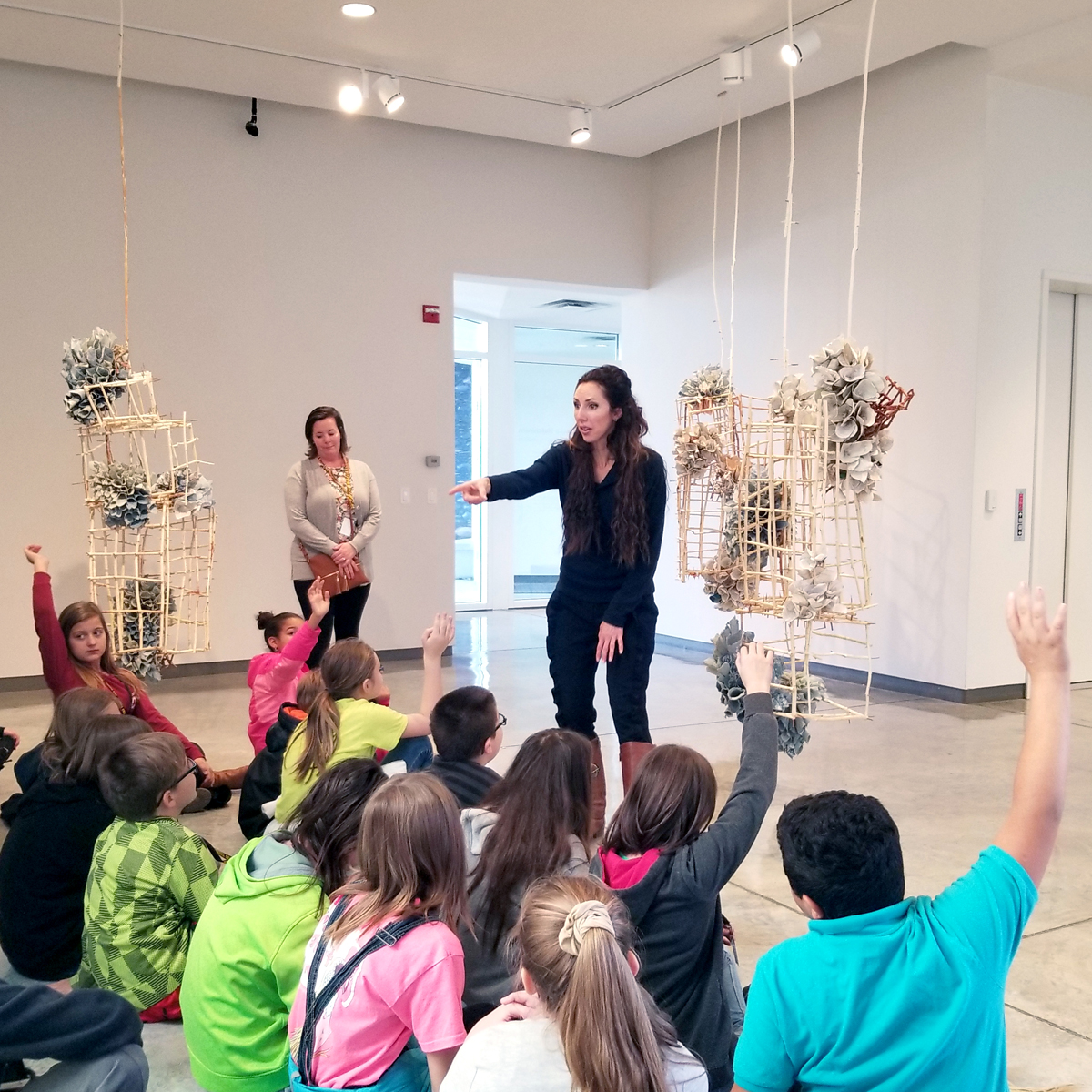Visual Thinking Strategies (VTS) is an innovative, learner-centered teaching method that uses facilitated art discussions to build important 21st-century skills—close observation, critical and creative thinking, purposeful listening, effective communication, and respectful debate. Grounded in 30+ years of research by cognitive psychologist Abigail Housen and her collaboration with museum educator Philip Yenawine, the deceptively-simple pedagogy has been adopted by schools & museums to actively engage participants from Pre-K through college and beyond. VTS engages students and adult learners with artwork when they are in the museum or classroom by asking three open-ended questions:
- What is going on in this piece?
- What do you see that makes you say that?
- What more can we find?
If students make an inference in giving their responses to the first question and do not back up their statement, then we ask the second question. What do you see that makes you say that? This makes students articulate their thinking and observations and support it with evidence. The third question implies that there are still answers to be sought, which promotes inquiry, and reminds us that no one has all the answers. VTS also promotes research in the classroom concerning the artist’s technique, method, or underlying concepts. This type of thinking transfers across curricula because students develop the habit of higher-level thinking and back up their findings with evidence.
Classroom analyses have stressed the importance of encouraging student-centered critical thinking, as opposed to traditional or generic “right” answers, in the growth of significant cognitive development in participants. National evaluations have quantified improvements among participants not only in visual literacy but also in general learning, including reading, writing, and math skills. A continued focus on specific key elements of the VTS methodology ensures the success and continued improvement of current and future Daum VTS programs.
Visual Thinking Strategies (VTS), is a school curriculum and teaching method that:
- Measurably increases observation skills, evidential reasoning, and speculative abilities
- Engenders the willingness and ability to find multiple solutions to complex problems
- Uses facilitated discussion to enable students to practice respectful, democratic, and collaborative problem-solving skills that over time transfer to other classroom interactions and beyond.
- Uses eager, thoughtful participation to nurture verbal language skills and writing assignments to assist transfer from oral to written ability
- Produces growth in all students, from challenged and English language learners to high achievers
- Underscores connections to art and strengthens the role of museums as a valuable resource in students’ lives
VTS is named in honor of Rudolph Arnheim whose work in Gestalt psychology led him to write convincingly about the connection between visual perception and thought, “visual thinking” as he called it. In Arnheim’s useful view, identifying what we see is an act of cognition. We think even as we sort out what we see. VTS builds on the premise of using visual art to teach thinking.*
To schedule curriculum compatible museum visits, contact Vicki Weaver at (660) 596-7331 or victoriaweaver@daummuseum.org.
“As the ELL teacher at Horace Mann, I have seen improvements in my students’ confidence levels, vocabulary usage, and writing skills while doing VTS. Children who once were too shy or embarrassed around their American peers to participate in VTS are now raising their hands and sharing ideas. They are expanding their thoughts to include not only concrete information but inferences as well. I see this not only in their speech but also in their writings. It seems that VTS has had a positive impact on my second language learners.” –Andrea Kuhlman


